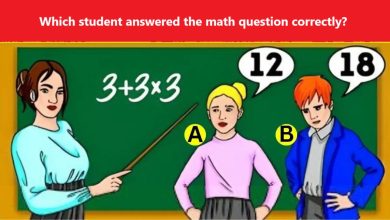Optical Illusion Challenge: Can You Find The Hummingbird Hidden In The Picture Within 11 Seconds?

Optical Illusion Challenge: I can see a cat, a flower like a lotus, and some leaves, but you have to find the hidden hummingbird. Take this optical illusion challenge to test your observation skills now and cognitive abilities. Timer is on!
Let’s spice up the weekend with this star-struck optical illusion challenge. Solving optical illusions is a great way to quickly assess intelligence. Instead of relying solely on mathematical formulas and equations, it puts to the test mental skills like creativity and keen observational power, giving the brain the exercise it requires.
Optical Illusion Challenge, As a result, mental acuity will improve, short-term memory issues will be helped, and brain cell communication will be improved. And today you have to find the hidden hummingbird hidden in the picture.
Also Read: Hidden Cat Optical Illusion: We Just Heard A Meow Sound! But Where Is The Cat In This Picture?

Source: Brightside.com
Can You Find the Hummingbird in the Picture of the cat?
Optical illusions require an unconventional way of observation, however, sometimes also involve excellent qualitative and quantitative approaches.
Optical Illusion Challenge, In contrast to the above image, you must use visual sharpness and cognitive skills to answer this optical illusion. Yes, it is really simple, and you just need to rack your brain to find all the animals in the picture.
Optical Illusion Challenge, Remember, this means that a single, streamlined illusion can reveal a wealth of information about the brain’s functioning and power.
Look for the optical illusion answer here:
Optical Illusion Challenge, An optical illusion is essentially a creativity-based thinking puzzle. As a result, with each trial, your ability to think and make decisions will get better. The brain game will also aid in problem-solving and strengthening your critical intuition.
The goal for you is to spot the hummingbird in the picture. Easy, right?
But I forgot to tell you, you just have 20 seconds, oh that’s too much, let’s make it 11 seconds.
Tick…
Tock…
Tick…
Enough of suspense and the low-key music in the background, let’s jump to the answer.
Optical Illusion Challenge, The Optical Illusion image has a huge cat face surrounded by a scenic view, including Lotus-like flowers and leaves. And to find the hummingbird, just divide the picture into sections to not miss any clues and hints.
Use all your brain, logical reasoning, observational power, and other skills to find all the animals in this optical illusion.
Coming back to the optical illusion…
I Am Sure You Are Done!
Optical Illusion Challenge, Well, if you are still struggling with the answer, then please have a look at the picture below to know the right answer to this optical illusion.

Source: Brightside.com
Optical Illusion Challenge, It was Fun, right? You can always view and study more brain teaser, intellectual games, puzzles and personality tests in the entertainment section of Chashmak Website. Share them with your friends if you like. Especially those who are interested knowing themselves better and having fun. Follow us on Instagram and Facebook and share your comments and suggestions.
Optical Illusion Challenge-FAQs
1.What is Optical Illusion?
Hidden Butterfly Optical Illusion, Optical Illusion or visual Illusion is an illusion caused by the visual system. It is characterized by a visual perception that appears to differ from reality.
2.How do Optical Illusions deceive us?
Optical Illusion is a visual deception where we get deceived by what we see or misunderstand the thing we saw. Optical Illusion deceives and confuses people by playing with color, light, and patterns.
3.What are the categories of Optical Illusion?
Hidden Butterfly Optical Illusion, Optical Illusion is said to be categorized into three types such as physical, physiological, and cognitive illusions.
Benefits of Optical Illusions
Entertaining and Fun
First of all, optical illusions can be fun. This can reduce stress, improve your mood and enhance relaxation.
Exercising The Brain
Research has shown that by exercising the brain, neural pathways are maintained, or enhanced. Such brain exercise can help to improve student alertness and performance on exams. There are therapeutic benefits to people with developmental disabilities as a brain therapy. There also is research indicating that symptoms of dementia or Alzheimer’s disease may be reduced and regression slowed through brain exercises.
Optical illusions also can challenge our perceptions and cognitive abilities, helping to improve our mental acuity and cognitive flexibility.
Therapy
They can be used therapeutically to help people with certain conditions, such as amblyopia (lazy eye), to improve their visual perception.
Given these benefits of visual illusions, what are the detriments? Some people may experience dizziness or eye strain, but the most common disadvantage is just frustration. After all, sometimes it can be tricky to find the illusion or hidden image.
Overall, optical illusions can be a fun way to engage with our visual perception and enhance our cognitive abilities.




